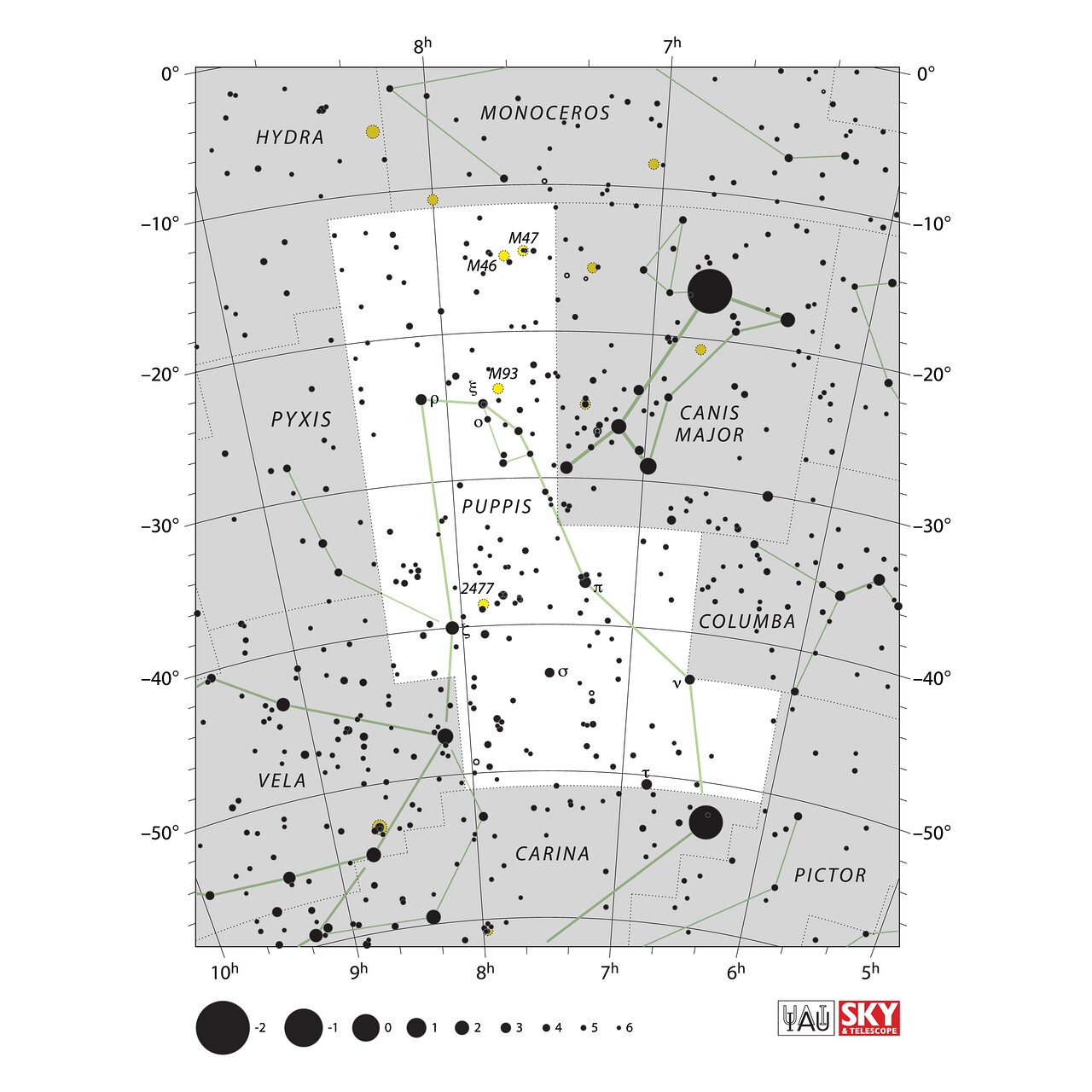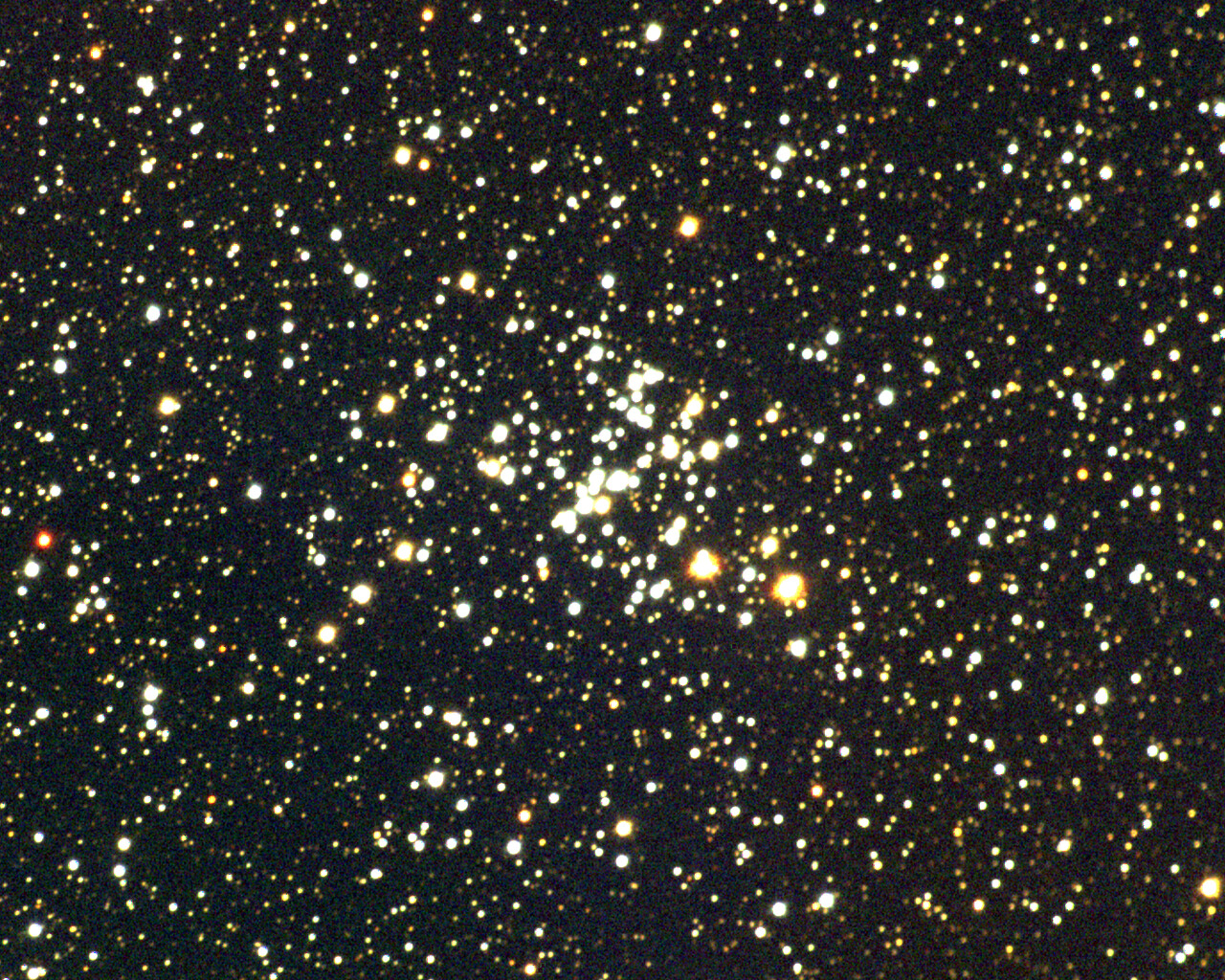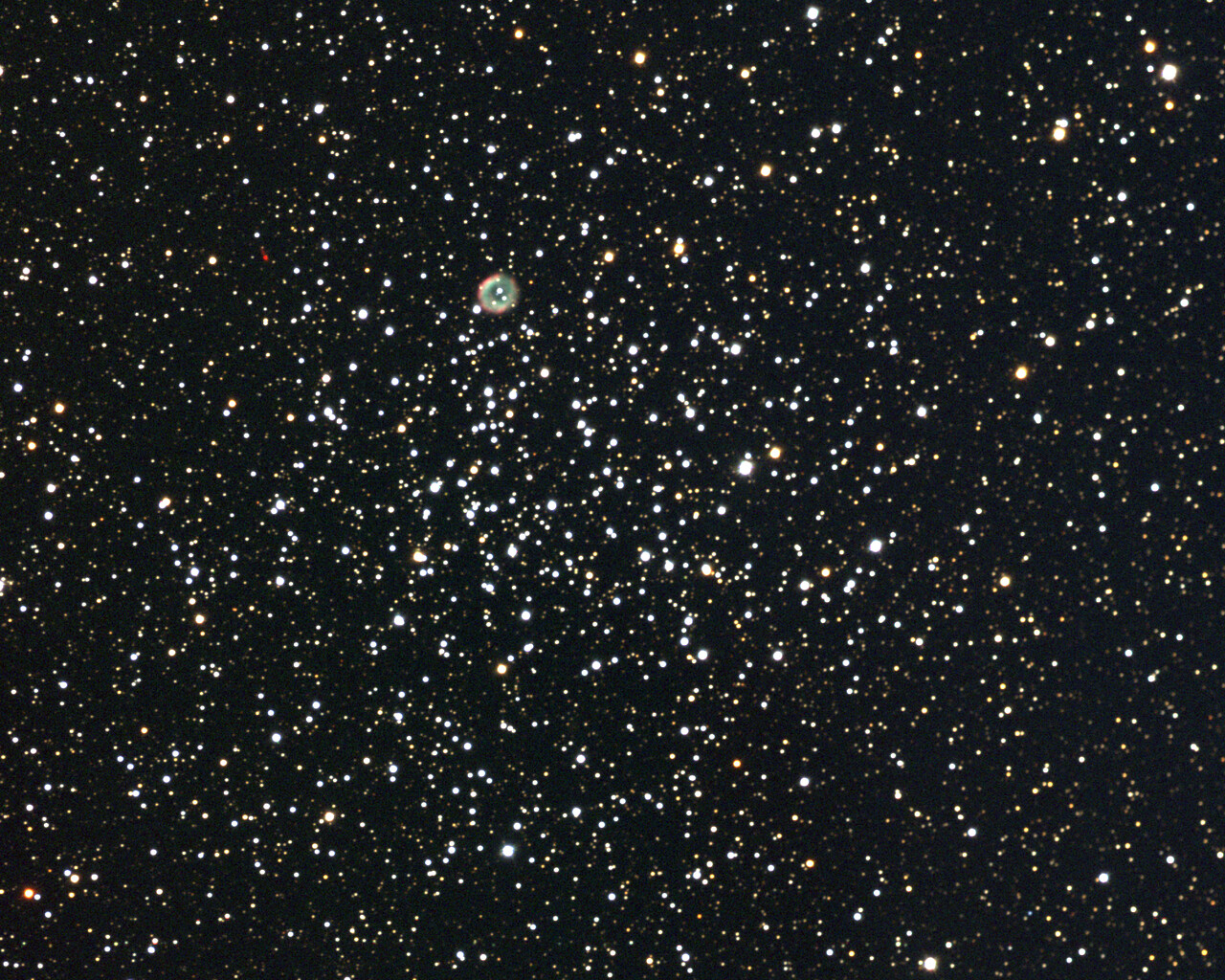Puppis
Origin
Puppis is a southern constellation but can be seen low in the sky from mid-northern latitudes during winter months. Puppis is the ‘poop deck’. It was originally party of a larger constellation called Argo Navis, the ship of Jason and the Argonauts. Argo Navis was split into Puppis, Carina (the Keel) and Vela (the Sail).
Bright Stars
The brightest star in Puppis is Zeta Puppis, also known as Naos. Naos is a blue supergiant about 1090 light-years from Earth. Pi Puppis is next, at a visual magnitude of 2.73 and lying 810 light-years away. Pi Puppis is a double star with an orange supergiant and a magnitude of 6.86. Tureis, or Rho Puppis, is a white giant shining at magnitude 2.78 and about 64 light-years away.


 Photo of the constellation Puppis produced by NOIRLab in collaboration with Eckhard Slawik, a German astrophotographer.
The annotations are from a standardized set of 88 western IAU constellations and stick figures from Sky & Telescope. Please find here a non-annotated version of the image.
Photo of the constellation Puppis produced by NOIRLab in collaboration with Eckhard Slawik, a German astrophotographer.
The annotations are from a standardized set of 88 western IAU constellations and stick figures from Sky & Telescope. Please find here a non-annotated version of the image.
Credit: E. Slawik/NOIRLab/NSF/AURA/M. Zamani
Notable Objects
Puppis has several objects of interest since the winter Milky Way crosses the constellation. Messier 46 is an open cluster that is just below naked-eye visibility at magnitude 6.1 and 5400 light-years away. The planetary nebula NGC 2348 is superimposed on Messier 46. NGC 2348 is closer to us at about 2900 light-years distant. Messier 47 is a slightly brighter open cluster that can be seen in the same binocular field as Messier 46. Messier 47 is closer to Earth at 1624 light-years away. Messier 93 is another 6th-magnitude open cluster about 3400 light-years away. NGC 2451 appears to be a 3rd-magnitude open cluster but is actually two open clusters in the same line of sight located 600 and 1200 light-years away. NGC 2477 is a rich open cluster shining at magnitude 5.8.













